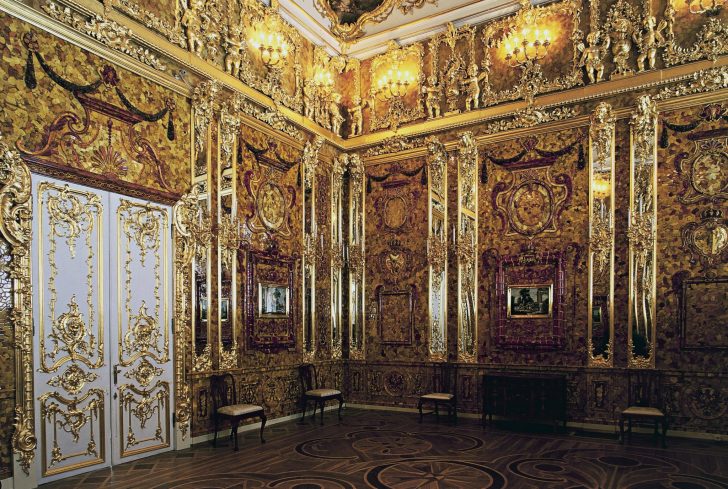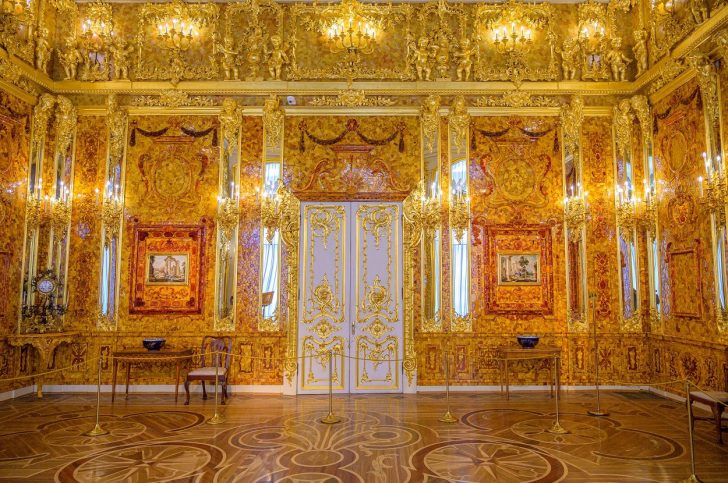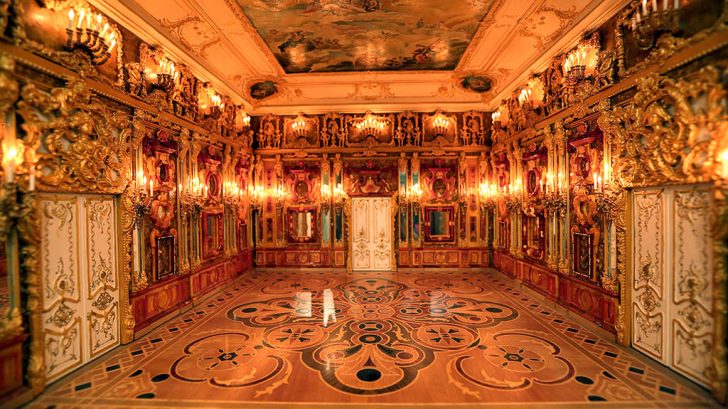Imagine stepping into a room where the walls glisten with the warm, golden glow of amber, illuminated by the light, showcasing an array of intricate carvings, gold leaf, and gemstones. This is not a scene from a fantasy novel but a description of the Amber Room - an opulent masterpiece of the 18th century that has captivated imaginations and sparked quests for its recovery.
The Amber Room Was a Royal Marvel
Crafted in the early 18th century, the Amber Room was a testament to the lavish tastes of European royalty and the skilled craftsmanship of the time. It was also a piece of art that reflected the zenith of human craftsmanship and the deep allure of nature’s beauty.

Marca / Often hailed as the “Eighth Wonder of the World,” the Amber Room was not just a symbol of extravagance.
Originally intended for the Charlottenburg Palace, the residence of Prussian kings, it was later gifted to Peter the Great of Russia in 1716 as a symbol of the Prussian-Russian alliance against Sweden. The room’s panels, made of several tons of amber, were adorned with gold leaf and mirrors, creating a mesmerizing effect that dazzled all who beheld it.
It was aimed as a gathering space for the Russian imperial court and a backdrop for the most prestigious of state affairs. However, its value was not merely in the materials but in the artistry and the cultural significance it held as a link between nations and a symbol of peace and diplomacy.
The Disappearance During WWII
The outbreak of World War II marked a turning point for the Amber Room. As Nazi forces advanced across Europe, the treasures of the continent were looted or destroyed. The Amber Room was no exception.

The Talks / Installed in the Catherine Palace of Tsarskoye Selo near Saint Petersburg, the Amber Room served as a private meditation chamber for the Tsar.
In a bid to protect it, the caretakers of the Catherine Palace attempted to conceal its walls behind mundane wallpaper. However, the ruse was unsuccessful. In 1941, the room was dismantled and transported to Königsberg Castle (now Kaliningrad, Russia) by the German army.
What followed remains one of the greatest mysteries of the 20th century. Amidst the chaos of the war’s final years, the Amber Room vanished. Some theories suggest it was destroyed by Allied bombings, while others believe it was hidden away in an undisclosed location, waiting to be discovered.
The Quest for the Amber Room
The disappearance of the Amber Room has given rise to numerous expeditions, investigations, and theories about its fate. Over the years, treasure hunters, historians, and enthusiasts have scoured Europe, following leads that ranged from plausible to fantastical. Despite these efforts, the room’s whereabouts remain a mystery, fueling speculation and hope that it may someday be found.

History / The Amber Room was a symbol of imperial power, a space for diplomacy, and a source of national pride.
It represented the pinnacle of Russian opulence and the Tsars' connection to European culture and politics. The room's loss was felt deeply, not just as a cultural tragedy but as a personal loss to the nation and its history.
Hopes of Finding the Amber Room Continue
The latest chapter in the search for the Amber Room unfolded in 2023, sparking renewed interest and excitement. The discovery of hidden railway tracks and wagon wheels at the site of concrete bunkers was once part of Hitler's German Army Supreme Command. This hinted at the possibility of the Amber Room's presence.
This site, near Hitler’s Wolf's Lair bunker in Poland, has long been rumored to hide war treasures. However, the Mamerki Museum's staff fueled speculation with social media posts showing these discoveries, suggesting that the Amber Room might still be out there, waiting to be uncovered.




